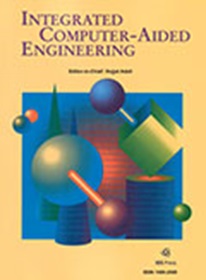Using sensor data to detect time-constraints in ontology evolution
IF 5.3
2区 计算机科学
Q1 COMPUTER SCIENCE, ARTIFICIAL INTELLIGENCE
引用次数: 0
Abstract
In this paper, we present an architecture for time-constrained ontology evolution comprised of two tools: the J2OIM (JSON to Ontology Instance Mapper), which uses JavaScript Object Notation (JSON) objects to populate an ontology, and TICO (Time Constrained instance-guided Ontology evolution), which analyses streams or batches of instances as they are generated and attempts to identify potential changes to their definitions that may trigger evolutionary processes. These tools help compensate for identified gaps in literature in instance mapping and modular versioning. The case-study for these tools involves a predictive maintenance (PdM) scenario in which near real-time data sensor enriched by contextual data is continuously transformed into ontology individuals that trigger ontology evolution mechanisms. Results show it is possible to use the instance mapping mechanisms in an incremental fashion while assuring no duplicates are generated and the aggregation of similar information from distinct data points into intervals. Furthermore, they show how the ontology evolution processes effectively detect variations in ontology individuals, generating and updating existing concepts and roles.利用传感器数据检测本体演化中的时间约束
在本文中,我们提出了一个由两个工具组成的时间约束本体演化的体系结构:J2OIM (JSON到本体实例映射器),它使用JavaScript对象符号(JSON)对象来填充本体,以及TICO(时间约束实例引导的本体演化),它分析生成的实例流或批量,并尝试识别可能触发演化过程的定义的潜在变化。这些工具有助于弥补实例映射和模块化版本控制方面文献中已确定的差距。这些工具的案例研究涉及预测性维护(PdM)场景,在该场景中,由上下文数据丰富的近实时数据传感器不断转换为触发本体进化机制的本体个体。结果表明,可以以增量方式使用实例映射机制,同时确保不会生成重复,并将来自不同数据点的相似信息聚合到间隔中。此外,他们还展示了本体进化过程如何有效地检测本体个体的变化,生成和更新现有的概念和角色。
本文章由计算机程序翻译,如有差异,请以英文原文为准。
求助全文
约1分钟内获得全文
求助全文
来源期刊

Integrated Computer-Aided Engineering
工程技术-工程:综合
CiteScore
9.90
自引率
21.50%
发文量
21
审稿时长
>12 weeks
期刊介绍:
Integrated Computer-Aided Engineering (ICAE) was founded in 1993. "Based on the premise that interdisciplinary thinking and synergistic collaboration of disciplines can solve complex problems, open new frontiers, and lead to true innovations and breakthroughs, the cornerstone of industrial competitiveness and advancement of the society" as noted in the inaugural issue of the journal.
The focus of ICAE is the integration of leading edge and emerging computer and information technologies for innovative solution of engineering problems. The journal fosters interdisciplinary research and presents a unique forum for innovative computer-aided engineering. It also publishes novel industrial applications of CAE, thus helping to bring new computational paradigms from research labs and classrooms to reality. Areas covered by the journal include (but are not limited to) artificial intelligence, advanced signal processing, biologically inspired computing, cognitive modeling, concurrent engineering, database management, distributed computing, evolutionary computing, fuzzy logic, genetic algorithms, geometric modeling, intelligent and adaptive systems, internet-based technologies, knowledge discovery and engineering, machine learning, mechatronics, mobile computing, multimedia technologies, networking, neural network computing, object-oriented systems, optimization and search, parallel processing, robotics virtual reality, and visualization techniques.
 求助内容:
求助内容: 应助结果提醒方式:
应助结果提醒方式:


